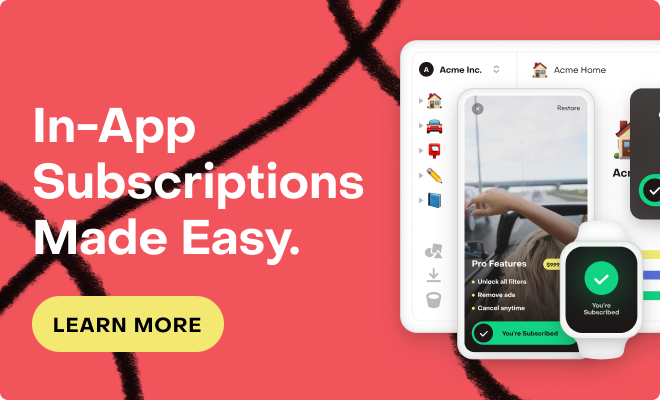I have tested non-subscription purchases in the sandbox, but I am having difficulty deleting user data. Is this the same as when running the app in production version? Also, I'm concerned about the possibility of users requesting a refund and the app not returning to its regular version. I hope my questions can be answered quickly since I'm new to using this service
Solved
One-time purchase Google Refund
Best answer by sharif
Hello,
It can be difficult to delete non-subscription purchases because they don’t expire. The best option for testing not having a non-subscription purchase is to create a new account.
Refunds can be tricky, especially with Google Play purchases. We explain how RevenueCat handles refunds here: https://www.revenuecat.com/docs/refunds
This post has been closed for comments
Enter your E-mail address. We'll send you an e-mail with instructions to reset your password.





